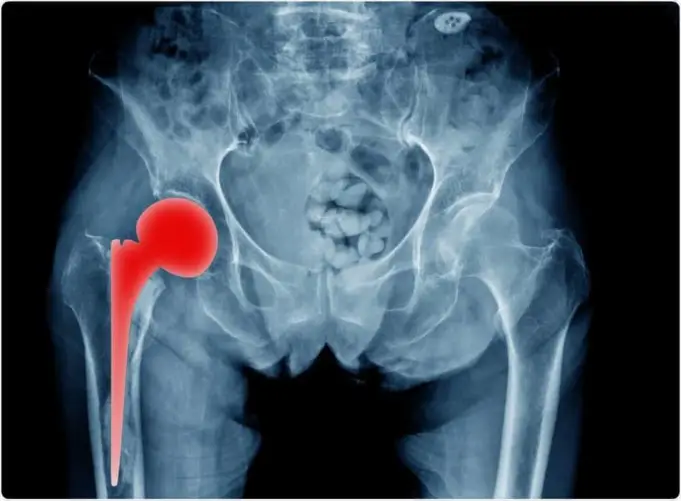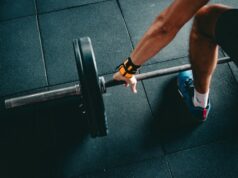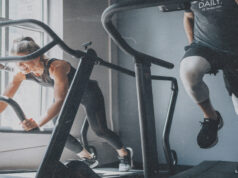Exercises during and after rehabilitation play an essential part in making your hip replacement surgery a long term success. It is a major surgery that has dramatically improved quality of life in people suffering from arthritis or a damaged hip.
The hip replacement surgery cost in India is very reasonable and the success rate of the procedure is also high. This makes it a popular method of treatment with severe hip condition that is not manageable by other non-invasive options.
Once you return home, regular exercise is important to restore strength and mobility of your hip. This helps in preventing complications, having a full recovery and gradually return to all your everyday activities.
Your orthopaedic surgeon and physical therapist may recommend certain exercises during the early recovery and then over time slowly start with some advanced exercises. They may suggest some of the exercises that are mentioned below.
Quad Sets – Knee extension stretch
This is to strengthen the thigh (quad) muscles and increase your knee extension
- Lie down on a surface, preferably your bed.
- Place a towel or rolled blanket under your ankle so that your knees are raised and do not touch the bed.
- Tighten your thigh muscles and press your knee as flat as possible – like squashing a ball under the knee
Short arc quads
This is to strengthen the thigh or quad muscles
- Lie down on a surface, preferably your bed.
- Roll up several towels or a blanket and place the roll under your knees.
- Keep your thighs on the roll and slowly start to straighten your knee while pulling your toes towards the ceiling.
- Try to hold this position for 5 seconds and then carefully lower your leg to the starting position.
- Repeat this 10 times with each leg
Glute squeeze – buttock contractions
This is to strengthen the gluteus or buttock muscles.
- Lie down on your back
- Keep your knees straight and squeeze your buttock muscles together
- Hold this position for 5 seconds
- Repeat this 10 times
Bridging
This is to strengthen your hip and buttock muscles.
- Lie down on your back
- Bend both your knees to a comfortable position or put a towel roll under your knee for support
- Squeeze your buttock muscles and slowly lift your hips up to a few inches off the bed.
- Gently lower your hips to the starting position
- Repeat this 10 times
Hip abduction (supine) – started after 2 weeks from the surgery
This is strengthen your thigh/quad muscles and increase knee extension
- Lie down on your back, preferably on a bed
- Keep your legs slightly apart
- Tighten your abdominal muscles and keeping one leg straight, move the other leg out to the side.
- Slowly return the leg to the straight position
- Repeat this 10 times with each leg.
Seated exercises;
Seated ankle pumps
This is to increase the strength and flexibility of the ankle muscles
- Sit on a low stool and rest your feet on the floor.
- Slowly and carefully move (push) your ankles up and down. You will feel a gentle stretch in your calf muscles.
- Repeat this 10 times with each leg.
Seated knee flexion
This is to increase the flexibility of your thigh muscles
- Sit on a chair to keep both knees bent and your thighs supported on the chair
- Gently slide your foot backwards under the chair without keeping your heels down.
- Hold this position for 5 seconds
- This will cause your knee to bend and stretch the muscles
- Repeat this 10 times with each leg.
Long arc quads – Seated kicks
This is to strengthen the thigh or quad muscles
- Bend the knee and keep your thighs pressed on the chair.
- Slowly straighten out your knee – as if to kick up
- Hold this position for 5 seconds
- Gently return your knees to the bent position
- Repeat this 10 times with each leg.
Standing exercises;
Standing Knee Raises
- Begin by keeping your feet on the ground.
- Lift your operated leg toward your chest.
- Knees are not to be lifted higher than your waist.
- Hold for 5 seconds
- Gently return your leg down to the starting position.
- Repeat 10 times.
Standing Hip Abduction
- Keep your whole body straight and hold on to something for support.
- Keeping your knee straight, lift your operated leg out to the side with toes pointed forwards.
- Hold for three seconds
- Relax and slowly lower your leg back to the floor.
- Repeat 10 times.
Standing Hip Extensions
- Keep your whole body straight and hold on to something for support.
- Keeping your knee straight, slowly lift your operated leg backward.
- Hold for 2 or 3 seconds.
- Relax and return your foot back to the floor.
- Repeat 10 times.
Exercises recommended after 4 weeks from the surgery –
Seated hip squeezes
This is to strengthen your leg adductors
- Bend the knee and keep your thighs pressed on the chair.
- Place a pillow or a rolled towel between the thighs
- Gently squeeze the roll or pillow with both legs
- Hold this position for 5 seconds
- Relax and return to the starting position
- Repeat this 10 times with each leg.
Straight leg raises
This is to strengthen the thigh or quad muscles
- Lie down on a surface, preferably your bed.
- Bend one knee and press the other (operated side) completely flat against the bed.
- Keep the knee straight and tighten your thigh muscles, then slowly lift your leg upwards – a few inches above the surface.
- Hold for 5-10 seconds and then gently lower the leg to the starting position.
- Repeat this 10 times with each leg
Sidelying Hip Abduction
This is to increase the strength of your abductor muscles
- Lie on your side (unoperated one) with lower bent for stability.
- Place a pillow or towel roll between your knees
- Keep the upper knee straight and slowly lift your leg upwards – towards the ceiling
- Slowly bring your leg down to the starting position
- Repeat 10 times
Author Bio:
Dr. Suneet holds a post-graduate degree in Hospital and Healthcare management from Tata Institute of Social Sciences (TISS) and works as an International Patient Coordinator at Lyfboat.













